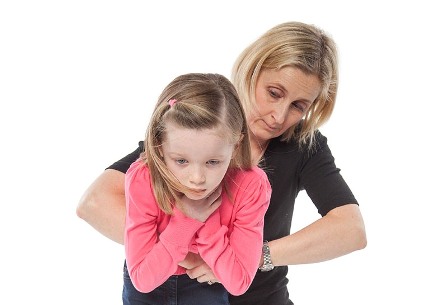Learning what to do if a child is choking
If a child is choking, it is often a life-threatening situation and you’ll have just a couple of minutes to take the right action to save the child’s life. For this reason, it is vital to ask your local doctor or clinic for instruction or a class on how to handle a choking event.
In the meantime, this article is only for general awareness of choking, and not intended or attempting to replace the formal first aid instruction you should get from your doctor.

As a parent, it will make an important difference to ask your local hospital or clinic about first aid courses that teach you what to do in the event of a child choking. That said, this is a guideline as to what you can expect to learn from taking such a first aid course… Children, particularly the under 5s, often put objects in their mouths.
This is particularly true for babies, as it is instinctive behaviour and a huge part of how they discover the world around them. Some small objects, such as buttons, wheels from toys, marbles, beads and (importantly) bites of food, are the right size to get stuck in a child’s airway and cause choking. The best way to avoid this is to make sure that small objects like these are kept out of your child’s reach and their food and play times are properly supervised at all times.
No matter how careful you are, it is still very easy for your child to choke on something. In some cases, you or someone else might actually see your child swallow the object that causes choking, but sometimes not. If your child suddenly starts coughing, isn’t ill and has a habit of putting small objects in their mouth, there’s a good chance that they’re choking.
A child’s airways can also become blocked when a child has an anaphylactic reaction, vomits during a seizure or becomes unconscious. Children can choke if their airways become partially or completely blocked. If a baby or child shows signs of choking, phone 999 and ask for an ambulance and advice immediately.
Signs that a child’s airway is partially blocked:
- Loss of voice • Choking noises • Coughing that keeps getting worse • Gagging • Wheezing and trying to catch a breath • Anxiety and distress • A shrill, rattling sound when breathing in • Sudden chest pain
COMPLETE AIRWAY BLOCKAGE – THE SIGNS OF CHOKING
The following signs will tell you that a child’s airway is completely blocked:
- The child can’t breathe and make any sounds.
- No air is getting out of the child’s nose and/ or mouth.
- The child’s skin goes pale very red or blue in colour and starts to lose consciousness quickly.
Make sure you discuss the signs with your local clinic or doctor and are familiar with what your emergency action plan should be if your child shows any of the above symptoms.
FOR BABIES UNDER ONE YEAR
If a baby under one year is choking, this is what you’ll learn to do on a short course from your local clinic or hospital. Phone 999 immediately. Sit down and lay the baby face down along your thighs, supporting their head with your hand. Give up to 5 sharp back blows with the heel of 1 hand in the middle of their back between the shoulder blades.
The aim is to angle the blows in an upwards direction to help dislodge the blockage. Check whether the blockage has cleared between each back blow. If the blockage hasn’t cleared, lay the child on their back, and give them up to five chest thrusts. Check whether the blockage has cleared between each thrust. If the child is still choking, alternate five back blows and five chest thrusts until emergency help arrives.
These measures are designed to create an artificial cough, increasing pressure in the chest and helping to dislodge the object. Your doctor or local clinic will show you how to perform back blows and chest thrusts correctly and effectively.
Chest thrusts for children under 1 year
Lay your baby face up along the length of your thighs. Find the breastbone and place 2 fingers in the middle. Give 5 sharp chest thrusts (pushes), compressing the chest by about a third.
CHILDREN OVER A YEAR OLD
For children and teenagers
Encourage the child to lean forward and cough. If that doesn’t clear the blockage immediately, phone 999 straight away Use the heel of your hand to give five firm back blows while they are leaning forward. Check whether the blockage has cleared between each back blow.
If the blockage hasn’t cleared, place one hand in the middle of the child’s back and the other hand in the centre of their chest. Using the heel of the hand on the chest, do five chest thrusts. Check whether the blockage has cleared between each thrust.
If the child is still choking, alternate five back blows and five chest thrusts until emergency help arrives.
Back blows for children over 1 year
Lay a small child face down on your lap as you would a baby. If this isn’t possible, support your child in a forward-leaning position and give 5 back blows from behind. If back blows don’t relieve the choking and your baby or child is still conscious, give chest thrusts to infants under 1 year or abdominal thrusts to children over 1 year.
Abdominal thrusts for children over 1 year
Stand or kneel behind your child. Place your arms under the child’s arms and around their upper abdomen. Clench your fist (with your thumb tucked in) and place it between the navel and ribs. Grasp this hand with your other hand and pull sharply inwards and upwards. Repeat up to 5 times. Make sure you don’t apply pressure to the lower ribcage, as this may cause damage.
Following chest or abdominal thrusts, reassess your child as follows. If the object still isn’t dislodged and the child is still conscious, continue the sequence of back blows and either chest or abdominal thrusts. Call out or send for help, if you’re on your own. Don’t leave the child. Call 999 if the blockage doesn’t come out after trying back blows and either chest or abdominal thrusts. Keep trying this cycle until help arrives.
Even if the object has come out, you’ll learn in a First Aid class that you still get medical help, because part of the object might be left behind, or the child may have been hurt by the procedure.
If the child is unconscious
If a choking child is, or becomes, unconscious, put them on a firm, flat surface and shout for help. Call 999, putting the phone on speakerphone so your hands are free. Don’t leave the child at any stage. Open the child’s mouth. If the object’s clearly visible and you can grasp it easily, remove it. If you can’t see it, do not push your fingers in to try and find it, as you may be pushing it down even further.
Tips to help a choking child
- If you can see the object, try to remove it. Don’t poke blindly or repeatedly with your fingers. You could make things worse by pushing the object further in and making it harder to remove.
- If your child’s coughing loudly, encourage them to carry on coughing to bring up what they’re choking on and don’t leave them.
- If your child’s coughing isn’t effective (it’s silent or they can’t breathe in properly), shout for help immediately and assess whether they’re still conscious.
If the child’s still conscious, but they’re either not coughing or their coughing isn’t effective, use back blows. Even if the object has come out, get medical help. Part of the object might have been left behind, or your child might have been hurt by the procedure.












Comments